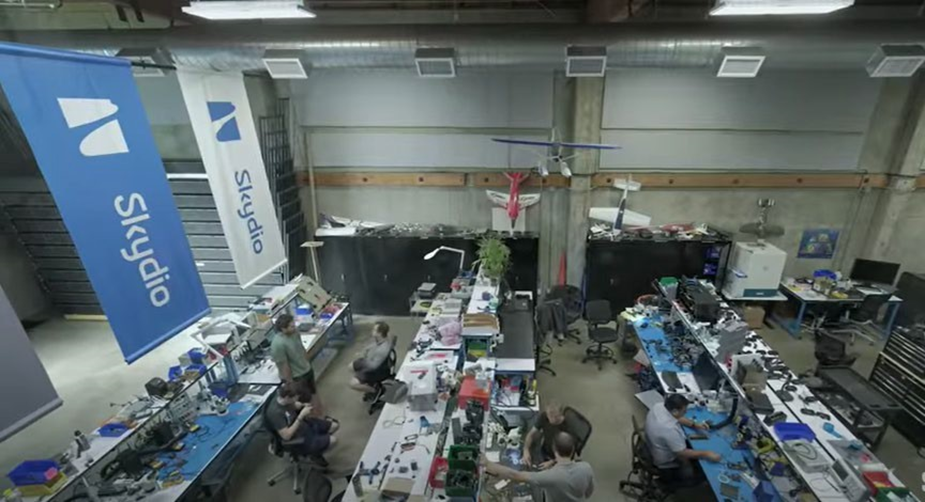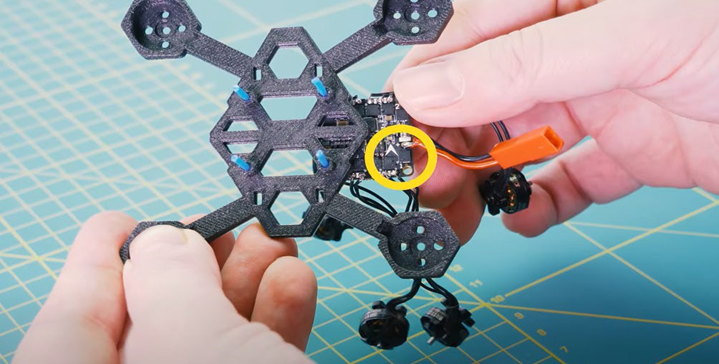
Charles R. Goulding and Adam Friedman consider how 3D printing has helped build up Skydio drones.
Since the beginning of 2021 and the Biden Presidency, efforts to ground and stop using drones produced by China’s largest drone manufacturer, Shenzhen-based DJI, have accelerated. The United States military has banned and stopped flying drones manufactured by DJI after intelligence and analysis determined that DJI and Chinese-made drones could spy inside American jurisdictions for reconnaissance.
Wall Street and Venture Capital firms have followed this military ban and in turn have spearheaded efforts to fund United States drone manufacturers. On February 28, 2021, it became official that California-based Skydio would receive a US$170 million Series D funding brokered by Andreesen Horowitz and post-funding new equity of US$1 billion.
Skydio Valuation
This news comes on the heels of the Department of Defense granting permission to five U.S. drone manufacturers to sell drones to federal agencies. The United States has allowed drone manufacturers to perform user testing in American skies as well as in other countries given a country’s clearance. This is favorable for the U.S. military because drone software allows for familiarity with U.S. terrain as well as simulated environments that the military might use for simulation training and development.
Skydio is the biggest recipient of U.S. policy as they have developed a unique niche with its detection software. The software allows Skydio drones to avoid crashing into landscape or barriers while traversing parks, mountain ranges, industrial areas, and hundreds, if not thousands, of other environments.
The billion-dollar valuation for Skydio is a large signal to increase investment in software technology. Skydio is a bellwether for its obstacle avoidance software and its large repository of Skydio drone navigation code. Skydio is a pioneer for the United States software market, as its manufacturers have technicians and programmers alike working in factory-designed workshops to produce and optimize the Skydio drones. If more companies like Skydio receive such funding from the financial markets, there will be more placement of navigation software developers in industrial settings. This trend should also play a role in accelerating driverless car technology for automobile manufacturers.
The military ban on DJI and Skydio’s valuation will also signal an increase in 3D printing with American drones. Skydio will be exponentially increasing its capacity for drone manufacturing and repairs. The increase in parts and their durability will look to 3D printing for materials and mathematically inspired design and remodeling of drones.
3D printing is also perfect for creating variable-size drones, ones with more weight and others with varying weight in specific areas of the drones. Similar research pursuits undertaken at universities, for example Yale University studying 3D printed materials for drones to simulate bird flight, will be undertaken at Skydio and its American counterparts. The usage of high-powered 3D printers and software in laboratories will allow American drones to utilize 3D printing in an unprecedented fashion.

Police Use of Skydio Drones
While not exactly the aerospace police vehicles of Blade Runner 2049, Skydio drones are becoming the de novo and du jour of the United States police and armed forces.
Already, 20 U.S. police departments have obtained Skydio drones for special operations. This comes after the news in 2020 of a police standoff involving two armed gunmen was monitored and correctly executed with the aid of a Skydio drone in Burlington, Massachusetts. The U.S. Customs and Borders Protection has solicited Skydio drones, while over 30 public defense agencies have also requested Skydio drones, as documented by Freedom of Information Act public requests and announcements.
From this news, expect police investment in learning to use and control drones by enlisting help from local citizens who own and regularly operate drones, some of who are super hobbyists and specialists. It would also come as no surprise if local drone competitions were held and there are Police Activity League (PAL) sponsorships of drone racing and showcases.
The Research & Development Tax Credit
Whether it’s used for creating and testing prototypes or for final production, 3D printing is a great indicator that R&D credit-eligible activities are taking place. Companies implementing this technology at any point should consider taking advantage of R&D Tax Credits.
Enacted in 1981, the now permanent Federal Research and Development (R&D) Tax Credit allows a credit that typically ranges from 4%-7% of eligible spending for new and improved products and processes. Qualified research must meet the following four criteria:
- Must be technological in nature
- Must be a component of the taxpayer’s business
- Must represent R&D in the experimental sense and generally includes all such costs related to the development or improvement of a product or process
- Must eliminate uncertainty through a process of experimentation that considers one or more alternatives
Eligible costs include US employee wages, cost of supplies consumed in the R&D process, cost of pre-production testing, US contract research expenses, and certain costs associated with developing a patent.
On December 18, 2015, President Obama signed the PATH Act, making the R&D Tax Credit permanent. Since 2016, the R&D credit can be used to offset Alternative Minimum Tax (AMT) or companies with revenue below $50MM and, startup businesses can obtain up to $250,000 per year in cash rebates that can be applied directly to payroll taxes.
Conclusion
The Skydio billion-dollar valuation is also a major policy play for the United States to compete with large international navigation organizations, such as Russia’s ROSCOMOS (Roscosmos State Corporation for Space Activities) and the Netherland’s TomTom. Skydio makes most of its source code for its navigation feature available and allows for other developers to work with its application programming interface (API) to develop new features for customized use. The features allow for data gathering, which the United States can parlay for any other technology or for other government department data usage or safeguarding. Ultimately, the U.S. government has done a favorable move for itself by banning DJI and signaling to the financial markets that U.S. drones have significant value for consumer and future technology markets.
